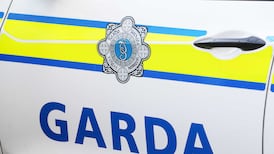A Pennsylvania coroner and district attorney are standing by for the exhumation of 57 Irish railroad workers believed to have been murdered by 19th century anti-immigrant vigilantes.
The Pennsylvania Emerald Society, an organisation of Irish-American police officers, has agreed to pay for memorial signs at the burial site and is negotiating with the US national railroad company, Amtrak, to allow for more tests on the land before the exhumation.
Under Pennsylvania law, a coroner and district attorney's office must be contacted in suspicious death cases, even alleged murders dating back to 1832.
Two history professors at Immaculata University in Pennsylvania, Prof William Watson and Prof John Ahtes, are organising the exhumation in Malvern, in the south-east of the state, and believe that a now-defunct railroad corporation hid files on the deaths to stop the truth from emerging.
Prof Watson said that the 57 were most likely single men, possibly Gaelic-speaking and many might not have been accustomed to a money economy. "They were in a very vulnerable position and were easily forgotten," he said.
The men are officially listed as cholera victims, but, according to Prof Watson, the railroad corporation hid the records for decades. The two professors have made an extensive search of state and national records to uncover the men's identities.
A Pennsylvania cemetery has volunteered individual graveyard spaces for all the men when their bodies are exhumed, and the research team has employed Irish graduate students to help research emigration and census records. According to Prof Watson, anti-Irish feeling was very strong at the time and the Irish were widely blamed for spreading cholera. A group of vigilantes was roaming Pennsylvania looking for Irish to attack, particularly when the fear of cholera gripped the wider public in 1832.
He believed the Pennsylvania and Columbia Railroad Company covered up the deaths to stop bad publicity and to ensure that Irish immigrants were not frightened away from railroad construction projects. The two professors believe they have uncovered the identity of Phillip Duffy, the men's foreman, who appeared to care little for the fate of his men.
"We believe that Phillip Duffy is from Tipperary," said Prof Watson. "We have a document saying that a Philip Duffy came in [to the US] after the war of 1812 and we believe this is our man," he said.








